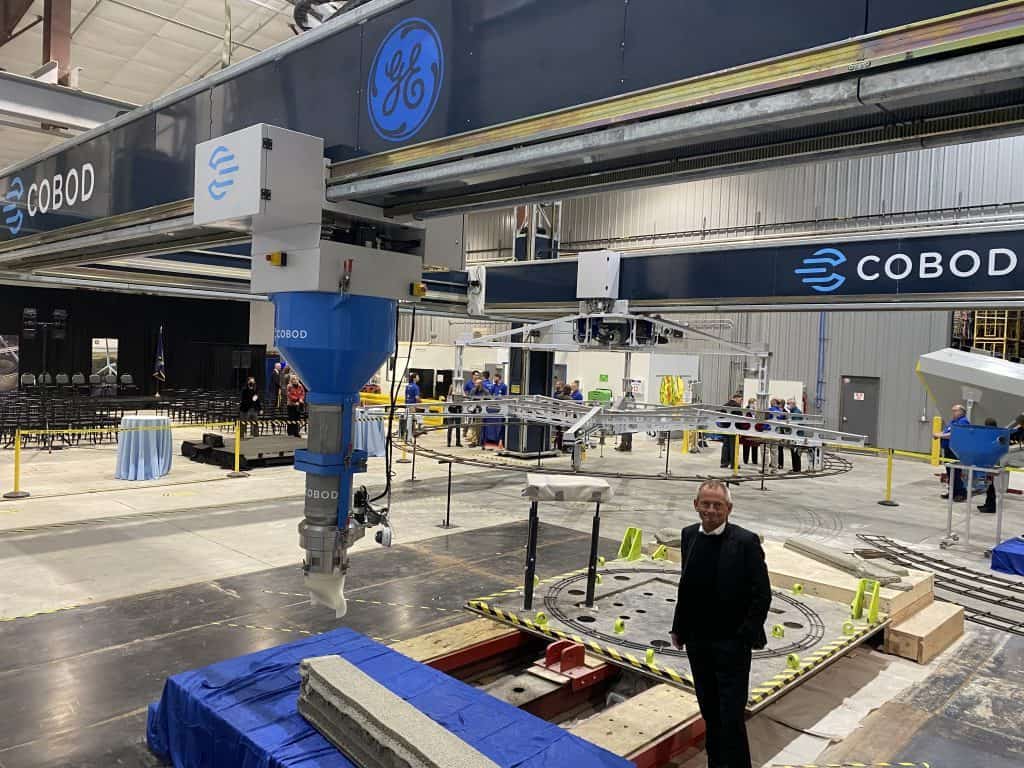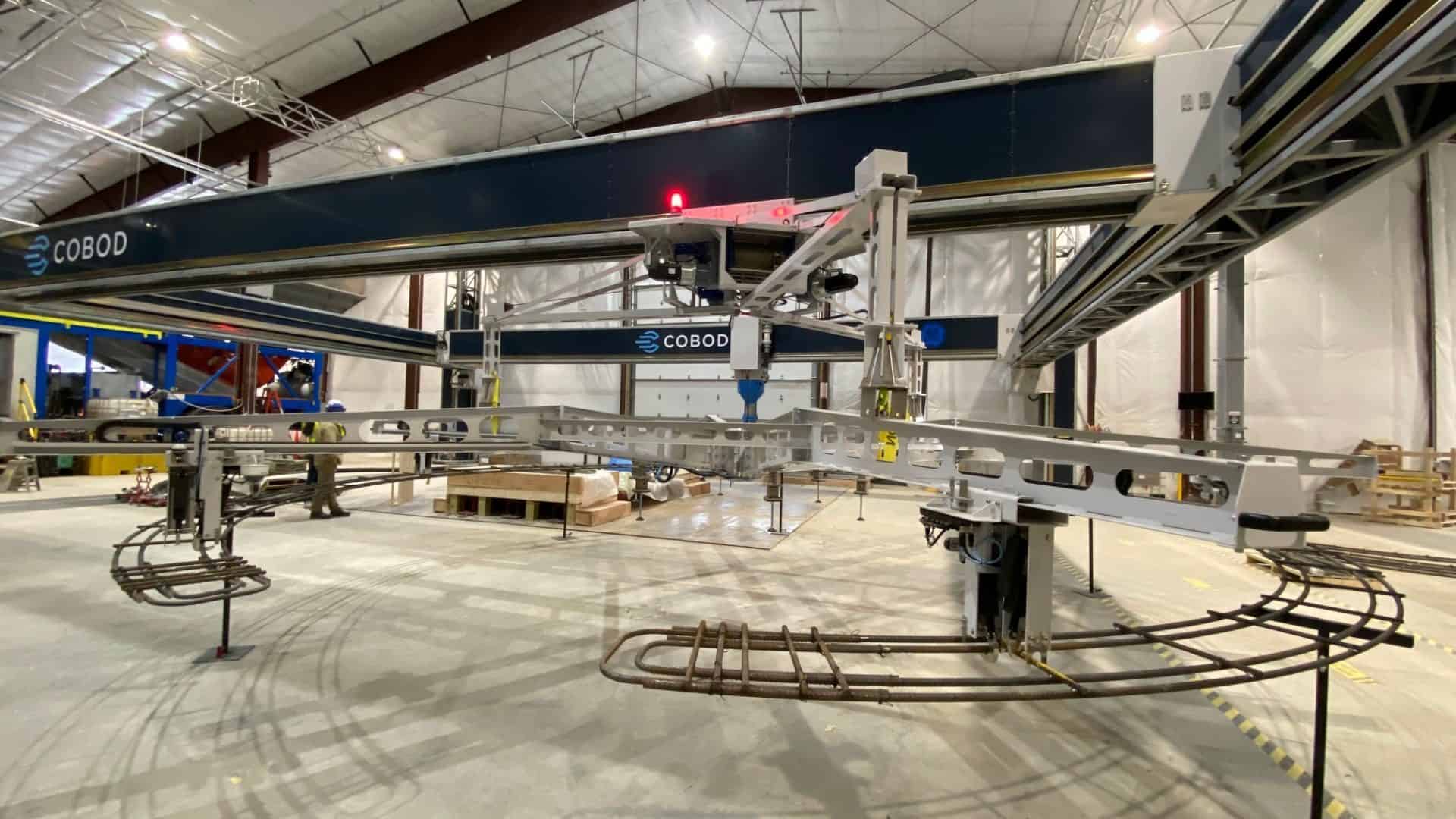GE Renewable Energy today held a ribbon-cutting ceremony to inaugurate a new state-of-the-art research and development facility.
The GE facility contains a new 3D concrete printing system developed by COBOD and a concrete batch mixing plant and pump. As a direct result of the development of a new giant printhead, the new printing system from COBOD is capable of 3D printing real concrete in volumes never seen before.

At the grand opening of the research and development facility, Henrik Lund-Nielsen, Founder & General Manager of COBOD, said: “We are extremely proud to have delivered a completely new type of 3D concrete printer for this world-class and state-of-the-art facility paving the way for future construction and how we do wind farms. The printer we have delivered is second to none, with the ability to print layers with an unprecedented width and height not seen before and a print capability of more than 10 tons of real concrete per hour. This is a 3D printer for large-scale and industrial volume printing; there is nothing like this anywhere in the world. With this output volume, we could have printed The BOD Building, Europe’s first 3D printed building, which we did in 2017 in just 2 hours.”
The new printer system from COBOD is a further development of the very successful BOD2 printer system, which so far has been the best-selling 3D concrete printer globally with more than 50 units ordered. The BOD2 printers have been used to print everything from single-floor residential housing to schools, offices, three-floor apartment buildings, concrete structures for the oil & gas industry, and wind-turbine tower bases.
Like the BOD2 printer, the new printer is a modular gantry type printer, but to deliver the output volumes required for GE’s large-scale application, the printer modules have grown to the double size of the BOD2 modules in all dimensions. This means, that the printer can handle even bigger prints than the BOD2 and still be very stable and precise even when printing fast. In addition, COBOD has added a second axis to the X-axis carrying the printhead for automated reinforcement of the printed structures.
Henrik Lund-Nielsen explained: By supplying the printer with two X-axis, where one is dedicated to concrete printing and the other X-axis to a tool, which automatically can pick up and place reinforcement on the printed concrete, the printer is no longer “just” a printer, but is, in fact, the first multifunctional construction robot in the world capable of making fully automated construction of reinforced concrete structures.
For further info, please contact:
Philip Knudsen, Head of Global Marketing & Communication; +45 30763076; pk@cobod.com
